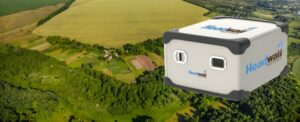Headwall has announced the availability of a new hyperspectral imager targeting very high resolution spectral measurements of 0.1 nm over specific spectral ranges. The imager is particularly suited to agricultural applications as it can measure vegetative fluorescence to measure plant health. The lightweight design means it can be mounted on a UAS.
The ability of the new High Resolution Hyperspec® instrument to analyze chlorophyll fluorescence emissions at extremely high resolution and high throughput gives remote sensing researchers and precision agriculturalists exceptionally valuable data from which to make environmental decisions. The new instrument is smaller, lighter, and more affordable than any other commercially available products and is optimized with robust packaging for airborne and satellite deployment.
“Our customers have been asking us for a high resolution hyperspectral imager targeting the small spectral bandpath ranges for use in extracting useful data with respect to chlorophyll fluorescence,” said Headwall’s CEO David Bannon. “Because remote sensing and the global crop industry is a multi-billion-dollar one, plant heath and physiology determined through hyperspectral imaging is a key investment for this market.” Water deficit is a major leading indicator of crops under distress, and there is a scientific link between this and chlorophyll fluorescence emissions.
The new sensor is based on Headwall’s all-reflective concentric optical design that uses very precise, very high diffraction-efficiency gratings for simultaneous high spatial and spectral resolution of < 0.1nm across the spectral range of the instrument. High efficiency, low stray light, and minimized smile and keystone distortion are fundamental to this design approach. Headwall’s all-reflective approach also means no transmissive optics, which makes the overall package not only more robust for space applications but lighter as well.



















